Astellas signed a license agreement with CV Therapeutics for the development and sale of the agent in July 2007.
CV Therapeutics, Astellas Heart-Monitor Drug Approved
stem and leaf plot maker
Astellas signed a license agreement with CV Therapeutics for the development and sale of the agent in July 2007.
The Clay Institute plans to hold a conference to celebrate the solution of the Poincaré conjecture on June 8 and 9 in Paris, France. Dr. Carlson was quoted as saying that Dr. Perelman will let him know in due time whether he will accept this pri! ze.
There are 6 other math problems left as Millen! nium Pro blems, so for those who are interested, you may find the list here. The solution of any of these will garner you a million dollars.
Introduction:
An area of surface that tends evenly towards top or down is called as slope. The slope of a line in the plane containing the x and y axes is generally represented by the letter m, and is defined as the change in the y coordinate divided by the corresponding change in the x coordinate, between two distinct points on the line. For finding slope intercept we need to know the following things.
Slope intercepts form:
The standard form of a line i! s,
ax+by+c=0
We can express the line as slope intercept form. The slope intercept form of a line is,
y=mx+b, Where m is slope of a line and b is y-intercept of a line.
Finding slope Intercept:
When two points are given, we can use the following formula to find the slope intercept form of a line,
(y-y1)=m(x-x1), where m is slope,(x1,y1) is one point in the line
The slope m can be obtained by using the following formula,
m= (y2-y1)/! (x2-x1), here (x1, y1) and (x2, y2) are the
points in a line or segment.
Or
y-y1/y2-y1=x-x1/x2-x1
Hope you like the above explanation. Please leave your comments, if you have any doubts.
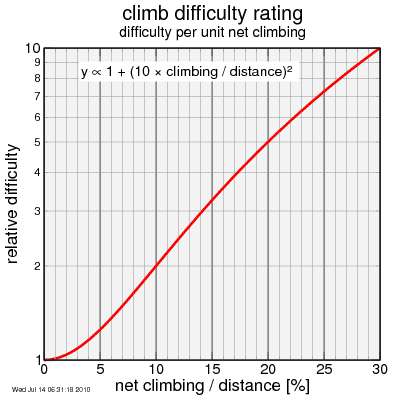 Climbing difficulty per altitude gained
Climbing difficulty per altitude gained
This article discusses the poss! ibility of using nonprofessional tutoring as means for advancing low achievers in secondary school mathematics. In comparison with professional, paraprofessional, and peer tutoring, nonprofessional tutoring may seem less beneficial and, at first glance, inadequate. The described case study shows that nonprofessional tutors may contribute to students' understanding and achievements, and thus, they can serve as an important assisting resource for mathematics teachers, especially in disadvantaged communities. In the study, young adults volunteered to tutor low-achieving students in an urban secondary school. Results showed a considerable mean gain in students' grades. It is suggested that affective factors, as well as the instruction given to tutors by a specialized counselor, have played a major role in maintaining successful tutoring.

Friday felt like the first true day of spring. The sun was shining, and I could almost feel the trees and plants waking from their winter slumber. By lunchtime, we were ready for something cool and refreshing, so headed over to Kuzina and ordered watermelon salads. It was the perfect lunch for a perfect day.
Oh sure, there’s still snow on the ground, the trees are bare, and the temperatures are still in the low 30s at night. But the days are gloriously long, 13 hours of daylight and rising, and the sun’s warmth is finally breaking through.
I grabbed a knife and bag and unsuccessfully went hunting for the first dandelions of the year. Although they weren’t up yet, I did see tiny red leaves of garden sorrel poking through the dirt. Primroses and leopard’s bane are up and growing rapidly. I wore boots and a wool coat for my Friday shopping. After the first stop, I dumped my coat in the car and basked in being able to walk around unencumbered. I saw women in sleeveless tops and men in shorts. It may be cold according to the thermometer, but Alaskans respond to the first sunny spring weather with outbursts of irrational exuberance.
I wore boots and a wool coat for my Friday shopping. After the first stop, I dumped my coat in the car and basked in being able to walk around unencumbered. I saw women in sleeveless tops and men in shorts. It may be cold according to the thermometer, but Alaskans respond to the first sunny spring weather with outbursts of irrational exuberance.
The grocery store’s produce aisle was stacked high with reasonably priced melons, reflecting South America’s seasonal bounty. I couldn’t resist a cut of juicy red watermelon, and decided to make a Watermelon, Feta, and Arugula Salad and pretend the snow was long gone.
The salad is one of my favorite dishes at Kuzina, a restaurant near the Ancient Agora archeological site in downtown Athens. Kuzina has an interesting menu, a very competent chef, and specializes in creative Greek cuisine.
We were last at Kuzina in September. My brother Bill and ! sister-i n-law Tommie had come to visit us in Greece; we met them in Athens before going to the island. It was great fun to show them around the city, and see it fresh through new eyes. The day we went to Kuzina, the four of us had spent the morning walking and walking through the fascinating Athenian streets.
One of my favorite things about Athens is the wonderful graffiti art painted on walls of abandoned and inhabited buildings alike. Here are some examples of the street art we saw on that sunny September day with Bill and Tommie:


 Wa! termelon, Feta, and Arugula Salad (Î"ÏοσεÏή Σαλάτα! με Κ αÏποÏζι, Ρόκα και ΦÎτα)
Wa! termelon, Feta, and Arugula Salad (Î"ÏοσεÏή Σαλάτα! με Κ αÏποÏζι, Ρόκα και ΦÎτα)
Adapted from Kuzina Restaurant, Adrianou 9 (Thissio), Athens, Greece
This salad is simple to make, and the arugula and balsamic make it special. The keys are cutting the watermelon thick enough to stand on edge, and finding firm feta that can be cut into large flat pieces. It’s also important to use good quality traditional balsamic vinegar. If you can’t find good balsamic, you can replicate its flavor by enhancing commercial balsamic with a little brown sugar. I use a ratio of 1 tsp. brown sugar per 5 tablespoons of commercial balsamic.
Watermelon
Feta cheese
Arugula
Best quality balsamic vinegar
Cut the watermelon into 1” slices. Cut off the rind, and cut the flesh into sharp triangles (use the watermel! on trimmings for another purpose). I try and remove the seeds for ease of eating, but it’s not necessary to do so.
Cut the feta into slices and then into the same shape triangles as the watermelon, but slightly smaller. I cut the feta smaller than is shown in the picture because doing so creates a better balance of ingredients.
Wash, clean, and dry the arugula.
Arrange the watermelon and feta slices as shown in the above photogaph, and fill the center space with arugula. Drizzle balsamic vinegar over everything, and serve.
~~~~~~~~~~~~~~~~~~~~~~~
Other Interesting Salad Recipes
Beet, Fennel, and Leek Salad with Lemon-Ginger Dressing (ΠαντζάÏια, ΜάÏαθο και Î Ïάσο! ΣαλΠ¬Ï„α με ΠιπεÏÏŒÏιζα Σάλτσα)
Beet and Red Pepper Salad (ΠαντζάÏια Σαλάτα με Κόκκινες ΠιπεÏιÎÏ‚)
Fennel-Preserved Lemon Salad with Preserved Lemon Aioli (Σαλάτα με ΜάÏαθο και Λεμόνια)
Grilled Radicchio and Arugula Salad with Parmesan Shavings (Σαλάτα με Ψητό Ραδίκιο, Î! ¡ÏŒÎºÎ±, και ΠαÏμεζάνα)
To find more salad recipes, Food Blog Search is a great tool.
~~~~~~~~~~~~~~~~~~~
This is my entry for Weekend Herb Blogging, hosted this week by Susan from The Well-Seasoned Cook.



"How do you know how to make the fractions in a proportion?
When making them, how do you know where each number goes making the fraction, like which ones go on top of the fraction?"
Well, actually you can choose which quantity will go on top; the proportion WILL work either way!
But, sometimes people are used to always putting certain quantity on top and certain on the bottom. For example, if the question is about speed and the unit is "miles per hour", that tells you that miles go on top, and hours on bottom, because "per" means division (the fraction line).
However, you could still solve the proportion by putting hours in the numerator of the fractions and miles in the denominator, and the calculation will turn out alright.
Or, if the question is about "dollars per pound", then dollars go to the numerator and pounds in the denominator.
Let's look at this problem for example:
A car drives on constant speed. It can go 80 miles in 90 minutes. How long will it take for it to travel 100 miles?
You can make both fractions to be
miles
-----------
minutes
minutes
------------
miles
80 mi 100 mi
-------- = ---------
90 min x
90 min x
-------- = --------
80 mi 100 mi
90 min 100 mi
-------- = -------
80 mi x min
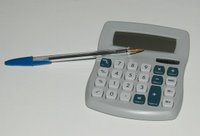 Overall, I thought the Vanguard Retirement Calculator was a reasonably accurate estimator for how much is needed. It takes salary growth (due to inflation), social security payments, and life expectancy during retirement into account.
Overall, I thought the Vanguard Retirement Calculator was a reasonably accurate estimator for how much is needed. It takes salary growth (due to inflation), social security payments, and life expectancy during retirement into account.

Concentric circle sun symbols,
Signal Hill, Tucson, AZ.
Photo: Jack & Esther Faris, 1990.

Sun with halo, May 19, 201! 0. Photo : Peter Faris, 2010.

Sun with halo, May 19, 2010. Photo: Peter Faris, 2010.
+Kachina.jpg)
Golden Rectangles
Wassily Kandinsky (16 December 1866 - 13 December 1944) was a Russian painter, printmaker and art theorist. One of the most famous 20th-century artists, he is credited with painting the first modern abstract works.
Click the figure below to see the interactive illustration of Several Circles (1926) by Wassily Kandinsky and the Golden Rectangle.
Read more:
Several Circles by Wassily Kandinsky and the Golden Rectangle
Geometry Problem
Click the figure below to see the complete problem 455 about Rhombus, Inscribed Circle, Angle, Chord, 45 Degrees.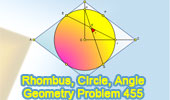
See also:
Complete Problem 455
Level: High School, SAT Prep, College geometry

Usually algebra textbooks provide lots of problems to practice the algebraic concepts and techniques, but some of you may still benefit from resources for free (or mostly so) printable algebra worksheets. Please see the list below, which I've originally compiled for my HomeschoolMath.net site.
Algebra worksheets
Worksheet Builder
Great and free worksheet maker software with nearly 7,000 built-in algebra and geometry questions.
www.jmap.org/JMAP_WORKSHEET_BUILDER_INSTALLATION_FILES.htm
Free Algebra Worksheets from KUTA Software
Free worksheets (PDF) for equations, exponents, inequalities, polynomials, radical & rational expressions and more.
www.kutasoftware.com/free.html
AlgebraHelp.com worksheets
Interactive worksheets that are checked online for most algebra 1 topics.
www.algebrahelp.com/worksheets/
Math.Com algebra worksheets generator
Generate worksheets for: linear equations, systems of equations, and quadratic equations.
www.math.com/students/worksheet/algebra_sp.htm
LessonCorner worksheets
These free worksheets include a few topics such as calculations with polynomials, factoring, and graphing lines.
www.lessoncorner.com/worksheets/
Algebra Fun Sheets
Worksheets that integrate algebra skills with fun activities including sudoku, word finds, riddles, color patterns, crosswords, games, matching cards, etc. A subscription is required.
www.algebrafunsheets.com
About.com Algebra Worksheets
An assorted collection of free algebra worksheets and answers. These pages are not very well organized, but they have lots of worksheets.
math.about.com/od/algebraworksheets/Algebra_Worksheets.htm
Algebra Worksheets from MathWorksheetCenter
Lots of worksheets for over 100 algebra topics. A few are free; most are accessible only by one-year a subscription.
www.mathworksheetscenter.com/mathskills/algebra/
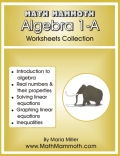
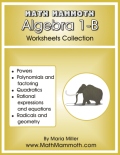 Math Mammoth Algebra 1 Worksheets Collection
Math Mammoth Algebra 1 Worksheets Collection
A two-part collection (A and B) of 137 quality algebra worksheets covering all the topics in a typical algebra 1 curriculum. These worksheets are hand-crafted and contain lots of word problems and other variable problems. Free samples available. $11.50.
www.mathmammoth.com/worksheets/algebra_1.php

 The tragic event of the deranged and frustrated Piper pilot (I learned to fly in a Cessna, so I think this applies to ALL Piper pilots. Okay, okay, just kidding!!) that went off his rocker last week, and crashed into the IRS building in Austin (sadly killing an employee) has no doubt got us all thinking 1) about the family of the IRS employee, and 2) about the family of the deranged lunatic. Our sincerest heartfelt sympathy goes out to those families.
The tragic event of the deranged and frustrated Piper pilot (I learned to fly in a Cessna, so I think this applies to ALL Piper pilots. Okay, okay, just kidding!!) that went off his rocker last week, and crashed into the IRS building in Austin (sadly killing an employee) has no doubt got us all thinking 1) about the family of the IRS employee, and 2) about the family of the deranged lunatic. Our sincerest heartfelt sympathy goes out to those families.If you are tired of trying to figure out who to trust, if you are tired of trying to figure out what voice to listen to for guidance, if you are tired of trying to be in the right place at the right time, whatever that means. Explore the world and see all the wonders. Give gold a try. It sounds like it may be right for you. Over the last 10 years gold has outperformed virtually every other investment out there. From stocks to bonds to real estate, there has not been any other investment that not only provides an above average return but also the feeling of security associated with just leaving your money in a savings account. Gold prices here are much worthy. You are assured of the quality and in time the prices will become higher and higher.
Gold is precious, though this time it is not that popular compare to real estate business. Bu! t it is a good business venture; you can earn much on this kind of business. Gold price will eventually go higher and higher as time pass by. A very good investment. Here are the The current five participants who fix the price of gold:
 The second secret (how can these be secrets if he's telling us them?) is 'Teach creativity systematically.' According to Schwartz there are five well-defined, widely accepted stages of creative thinking: insight, saturation, incubation, illumination, and verification. I read the blog post the link in the previous sentence takes you to (it's very irritatingly bringing up some oddball codes on my browser) and I don't particularly disagree with these steps. Although when she (someone called simply, Maria) says, "The first stage of the c! reative process is finding or formulating a problem. The tricky part about this stage is that it requires creativity in itself," I kinda feel that there's a bit of a catch 22 in there somewhere. However, these stages are worth considering - once I've dealth with one of my inner man's unmet needs.
The second secret (how can these be secrets if he's telling us them?) is 'Teach creativity systematically.' According to Schwartz there are five well-defined, widely accepted stages of creative thinking: insight, saturation, incubation, illumination, and verification. I read the blog post the link in the previous sentence takes you to (it's very irritatingly bringing up some oddball codes on my browser) and I don't particularly disagree with these steps. Although when she (someone called simply, Maria) says, "The first stage of the c! reative process is finding or formulating a problem. The tricky part about this stage is that it requires creativity in itself," I kinda feel that there's a bit of a catch 22 in there somewhere. However, these stages are worth considering - once I've dealth with one of my inner man's unmet needs.If you are tired of trying to figure out who to trust, if you are tired of trying to figure out what voice to listen to for guidance, if you are tired of trying to be in the right place at the right time, whatever that means. Explore the world and see all the wonders. Give gold a try. It sounds like it may be right for you. Over the last 10 years gold has outperformed virtually every other investment out there. From stocks to bonds to real estate, there has not been any other investment that not only provides an above average return but also the feeling of security associated with just leaving your money in a savings account. Gold prices here are much worthy. You are assured of the quality and in time the prices will become higher and higher.
Gold is precious, though this time it is not that popular compare to real estate business. Bu! t it is a good business venture; you can earn much on this kind of business. Gold price will eventually go higher and higher as time pass by. A very good investment. Here are the The current five participants who fix the price of gold: